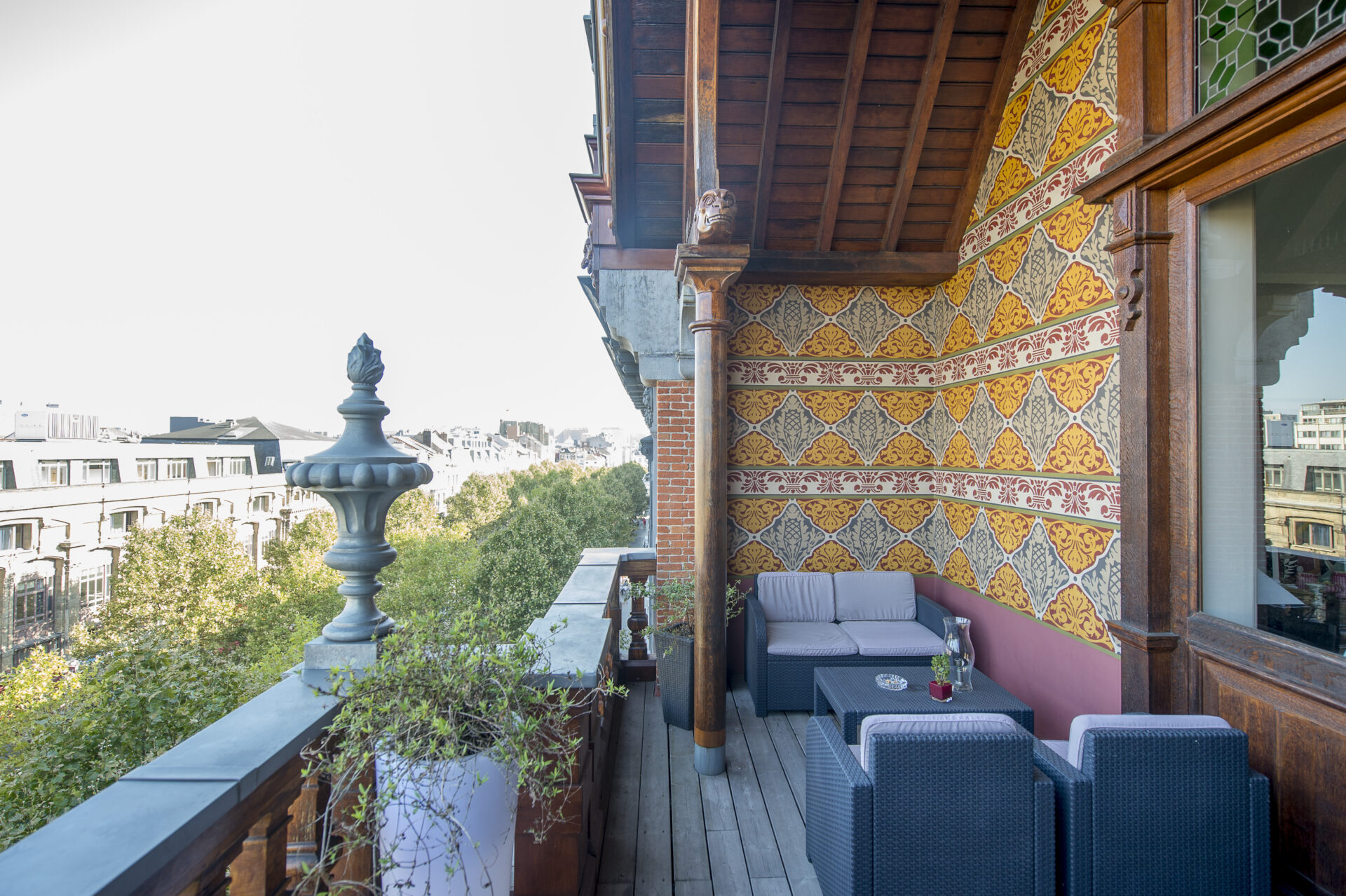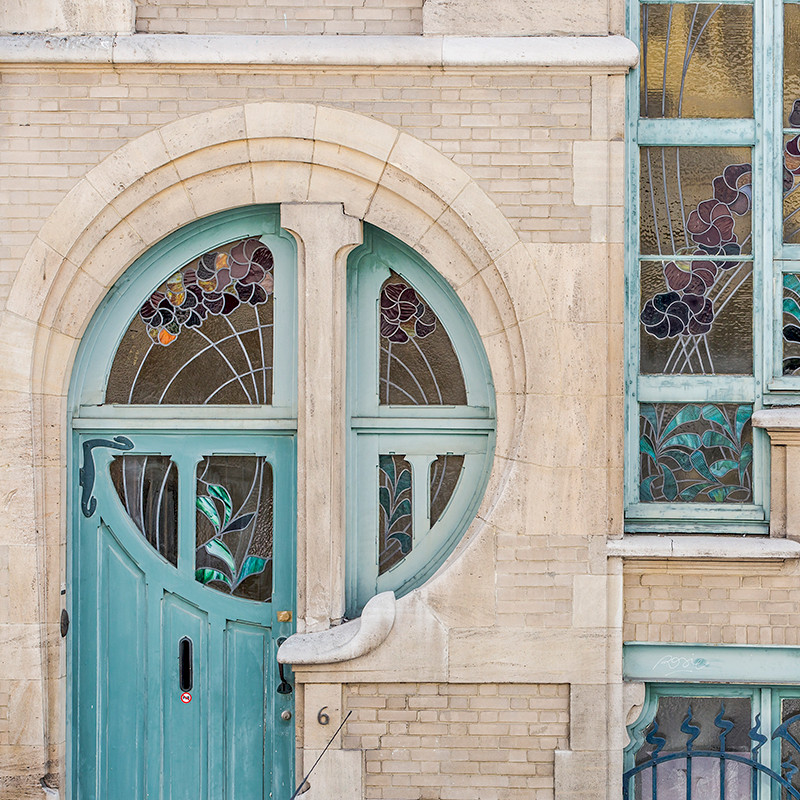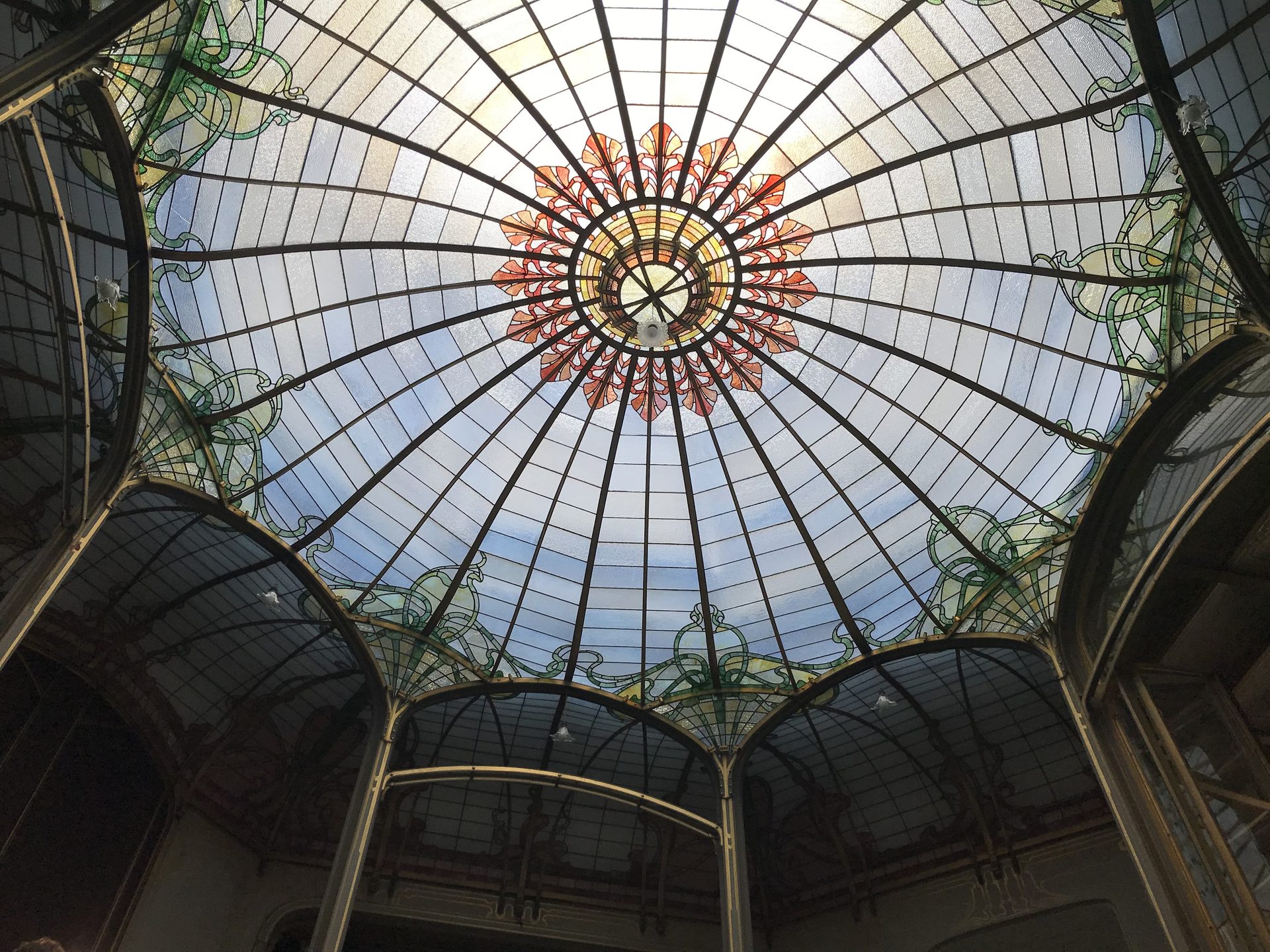This weekend, a wide range of activities will be organised for the 35th edition of Brussels' Heritage Days (Journées du Patrimoine in French), inviting residents and tourists to explore the very best of Art Nouveau in the capital.
What are Heritage Days?
The Heritage Days or Open Monuments Day (Open Monumentendag in Dutch) is an annual event organised across the country. Monuments that are usually not freely accessible are opened to the public for one or more days.
Visitors are introduced to architectural, landscape and archaeological heritage in a wide range of cities and towns to raise awareness of the role and significance of heritage, and thus increase solidarity around heritage care.

The Maison Jamaer, located on Stalingrad Avenue 62 in Brussels city centre was open for the heritages days in 2018. Credit: Belga / Filip de Smet
The events in Belgium form part of the European Heritage Days which take place in September, during which people can discover monuments and heritage across 50 different European countries.
Every region has its own theme for this all-encompassing event: in Wallonia, this much-loved event took place last weekend (9 and 10 September), while it was limited to one day in Flanders (Sunday 10 September).
Brussels gems on show
In line with this year's Art Nouveau theme, the Brussels Heritage Days will invite visitors to discover the capital's rich architectural heritage in over 150 places, under the banner 'Art Nouveau, art for all?'.
Art Nouveau was first introduced in the capital with the inauguration of Hôtel Tassel in 1893, an iconic structure created by Belgian architect Victor Horta (1861-1947), who is regarded globally as one of the architectural style's founding fathers. Brussels is now home to more than 1,000 Art Nouveau buildings.
The rich and varied programme, including guided tours and cultural events, will put these beautiful buildings in the spotlight over the next couple of days.

Credit: Urban Brussels
"The Heritage Days are the opportunity to discover Brussels' heritage gems that are normally hidden from the general public," said Ans Persoons, Brussels State Secretary for Town Planning and Heritage. "The entire Art Nouveau year is already a smashing success, with more than 700,000 visitors from home and abroad. This weekend puts Brussels in the spotlight once again as the global capital of Art Nouveau."
Rich, controversial history
These interactive activities and events will shed light on the emergence of this architectural style and its lasting influence, as well as the origins and particularities of the materials used, and where they were sourced. The tours will also discuss what inspired the architects and designers.
Controversially, Belgium's former colony Congo, where many acts of violence and cruelty were committed by the colonisers, was a source of fascination for artists and architects of the time for its 'exotic' materials and forms. Many of the materials used to construct Art Nouveau buildings therefore originate from Congo's colonisation, such as specific types of wood and ivory.
This was showcased in a recent exhibition Style Congo Heritage & Heresy, curated by Sammy Baloji at CIVA, the Brussels-Capital Region's modern architecture museum.

The colonial aspects of Hotel van Eetvelde, a townhouse designed in 1895 by Victor Horta for Edmond van Eetvelde, administrator of Congo Free State. Credit: Belga / Timon Ramboer
The term 'Style Congo' was used to describe what is now known as Art Nouveau. However, architects and artists were reluctant to draw a link to the colonial aspect of this architectural movement.
The Heritage Day activities will also highlight the challenges in conserving these buildings, and whether the style still influences the way in which people live in the city today.
Other events
Brussels is not only the Art Nouveau capital: it is also a diplomatic capital. Diplomats from all over the world work and stay here, often in very special buildings.
This year, people can once again admire numerous embassies and residences as they can gain unique access to these buildings that are normally closed off to the general public.
Many other must-see monuments and museums will also be included in the programme.
More information can be found here. For some events, reservations are needed.

